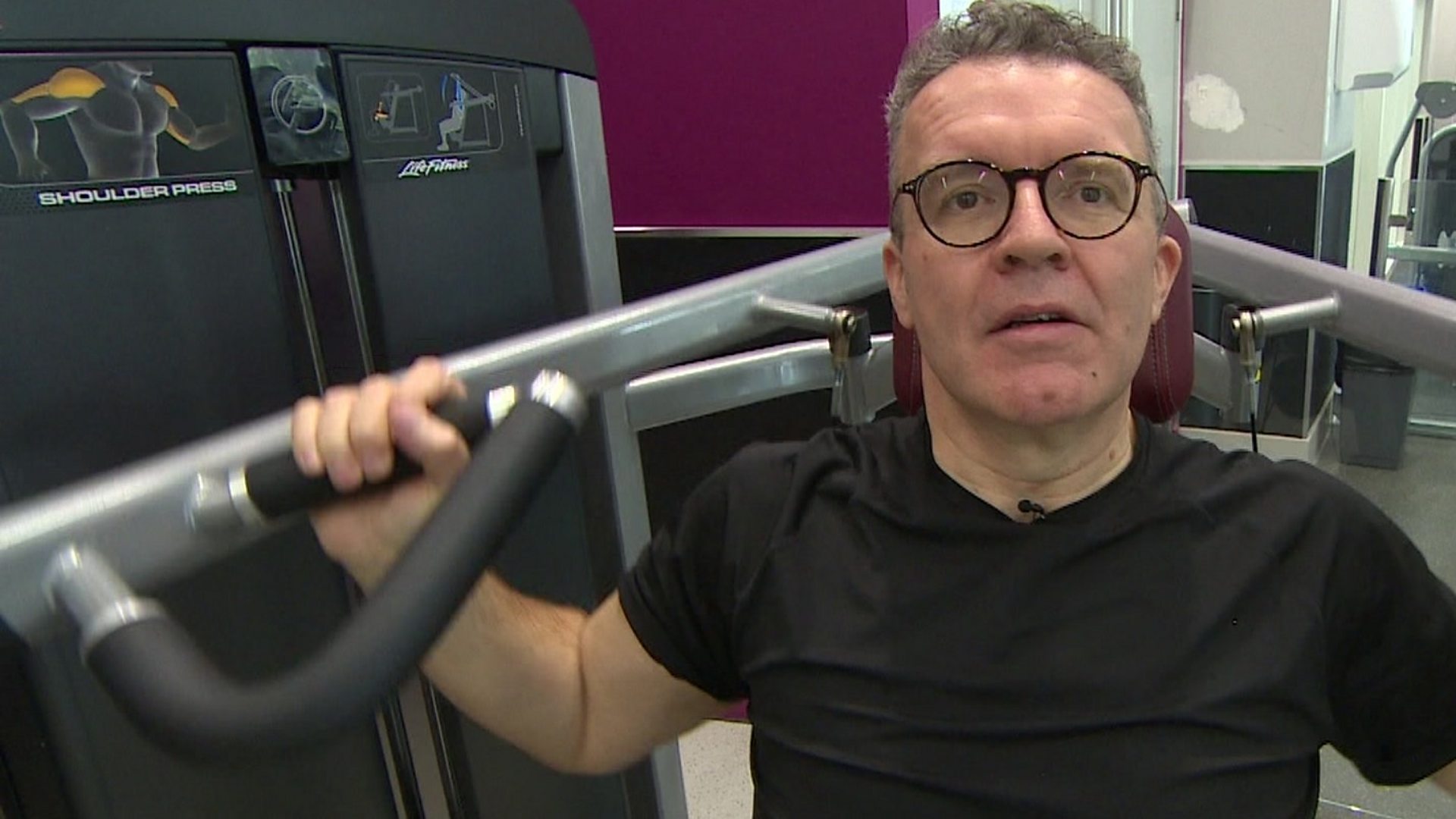He's written a new book on his journey, especially his weight loss, and he hopes to encourage those who are starting their own.

Tom Watson's Weight Loss Tricks
The main keys to Tom’s successful weight loss:
- He embarked on a weight loss journey to improve his overall health
- He eliminated all sugary carbs, refined sugar, and processed meals from his diet
- He also works out to manage his weight
Related Weight-Loss Posts
Tom Watson had diabetes and an eating disorder at the same time.

In an interview with the Guardian restaurant critic Grace Dent on the Comfort Eating podcast back in November 2021, Tom disclosed that he was diagnosed with type 2 diabetes in 2015 and that he discovered he had an eating issue at the age of 54.
“It was actually one of those idiot moments where … you realize something about yourself, and so I kind of think I’ve had some form of eating disorder,” he remarked at that time, adding that it may be similar to obsessive eating.
In regards to his diabetes diagnosis, he described it as a source of tremendous embarrassment in a separate interview with the publication: “I felt frightened and ashamed that I had come to this point, and guilty.”
According to Mayo Clinic, type 2 diabetes is a condition that affects how the body controls and uses sugar glucose for energy. Too much sugar circulates in the circulation as a result of this long-term chronic disease. High blood sugar levels can eventually cause problems with the circulatory, neurological, and immunological systems.
“I’ve only admitted it publicly now, even though I’ve been in remission for a year, and I’ve felt quite nervous. I think particularly men find it difficult to talk about health.”
“I guess it was a combination of lack of knowledge and fear; for a year or two, I was in denial. Then I started to read a lot more and started to realize that if I got my weight down, it would affect my insulin level and blood pressure,” he continued.
Tom Watson read two books to assist him in losing weight.

Tom continued his conversation by revealing the two books that have helped him learn more about how to fight diabetes by losing weight. Aseem Malhotra’s “The Pioppi Diet,” which supports a low-carb diet, and Michael Mosley’s “The Fast Diet” are the two books.
“They contradicted some of the public health advice that was available and the marketing messages, [particularly] about low-fat products,” he added after searching for the scientific articles and studies alluded to in the references of the books for around six months.
The first step in Tom Watson's weight loss journey.

Tom Watson took the first step toward his own weight loss journey by eliminating all sugary carbs from his diet. He claimed in an exclusive interview with the Daily Mirror about his book, “Downsizing,” that he is determined to curb his long-term sugar addiction.
“I made a concerted effort to omit sugary carbohydrates from my diet (so no cakes, biscuits, or chocolates), and I tried my best to limit starchy carbs like bread [which may cause bloating], rice, pasta, and potatoes,” Tom explained.
“The morning after my inaugural workout, I tackled a job that had desperately needed doing for months: a wholesale clear-out of my little kitchen.”
“This meant bidding farewell to sweet snacks (goodbye, my beloved KitKats) as well as my favorite breakfast cereals and muesli bars. Nothing remotely sugary was spared the cull,” he noted.
What happened after Tom Watson eliminated all sugary carbohydrates from his diet?

The Labour MP instantly began to feel much better after doing so, saying to The Guardian, “My sleep improved after about a week and a half.” In addition, his blood glucose levels returned to normal after a month of medication.
“I consider myself diabetic and a reformed sugar addict because I know that if I take sugar in again, the condition will come back. But I’m liberated,” he said. “I don’t get tired; I don’t get the thing called ‘brain fog’ when your mental acuity is deadened a bit. All of that is gone. I feel more energetic.”
Tom Watson, like many others, works out to lose weight.

Tom began exercising about the same time he stopped eating sugary carbohydrates, and he informed The Guardian about his experience, saying, “I set myself little goals to start with. The first was I decided to use whatever stairs I came to, rather than the lift. I’d forgotten it was 36 steps to my office.”
“The first time I went up the steps, I felt I would probably need oxygen at the end of it. The office would always laugh at me because I would cling to the wall when I got to the top,” he recalled. “I started monitoring my daily steps and tried to do 10,000 steps a day. It was quite hard, and I would feel very tired after the first 5,000.”
He then began weight training in January 2018 after that. Tom informed the Cambridge Independent in an interview that he is preparing to become a level two gym instructor.
“I have done the initial course, but I have to do the anatomy exam and a portfolio,” he shared. “I’m just trying to get that in the next 12 months. That’s for personal interest.”
“I want to be in a position where I can give advice to others because I have had over 1000 emails asking for advice. I tell people I’m not professionally qualified, but I could give a bit of advice on living an active life with a level 2 gym qualification.”
He additionally walks a lot and performs two cardio exercises a week, such as running on the treadmill or running 5 kilometers outside, or a boxing session. He also does weight training a couple of times a week.
Tom Watson is pleased with the weight he has lost.

“I’m very comfortable with the shape I’m in now, and I still feel like I’m in control of my eating. I will never go back to the way I was before. I will never let it happen.”
“There are too many joys in life I will lose again if I go back to the way I was,” he concluded his statement to Cambridge Independent. “It’s a matter of profound sadness that it took me a long time to get there, but great relief I finally did.”
